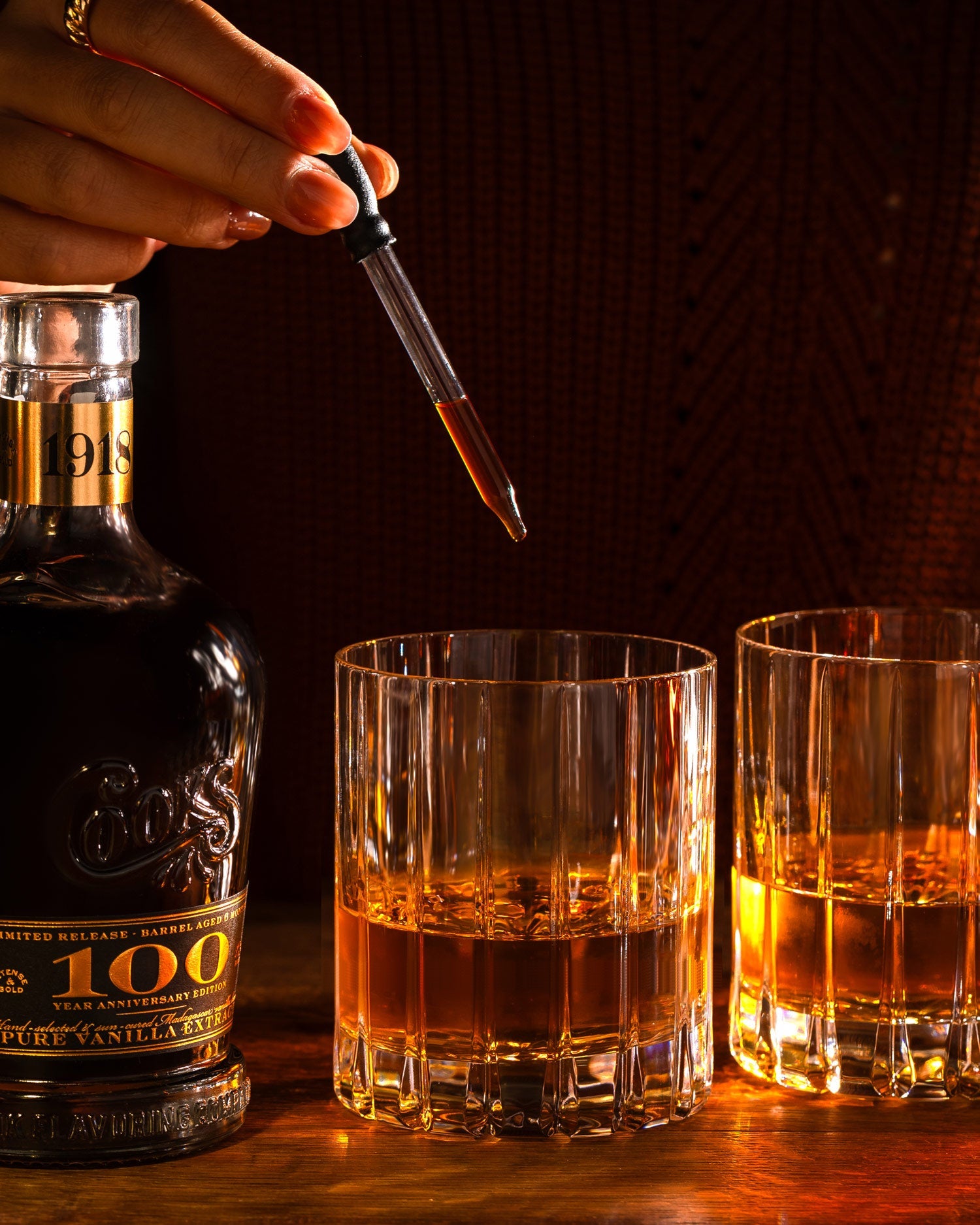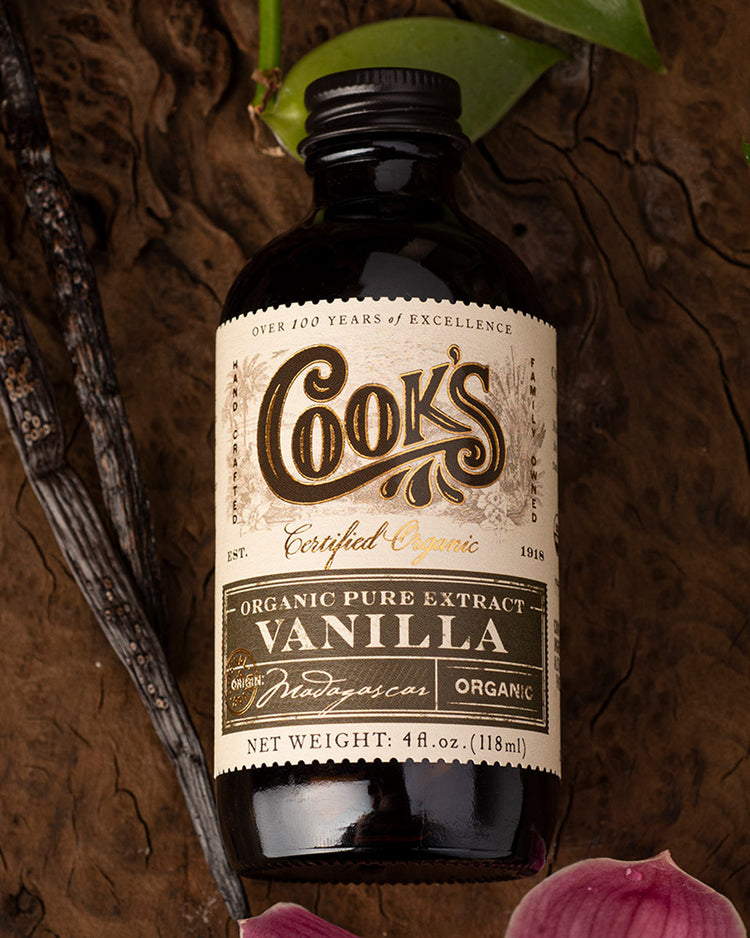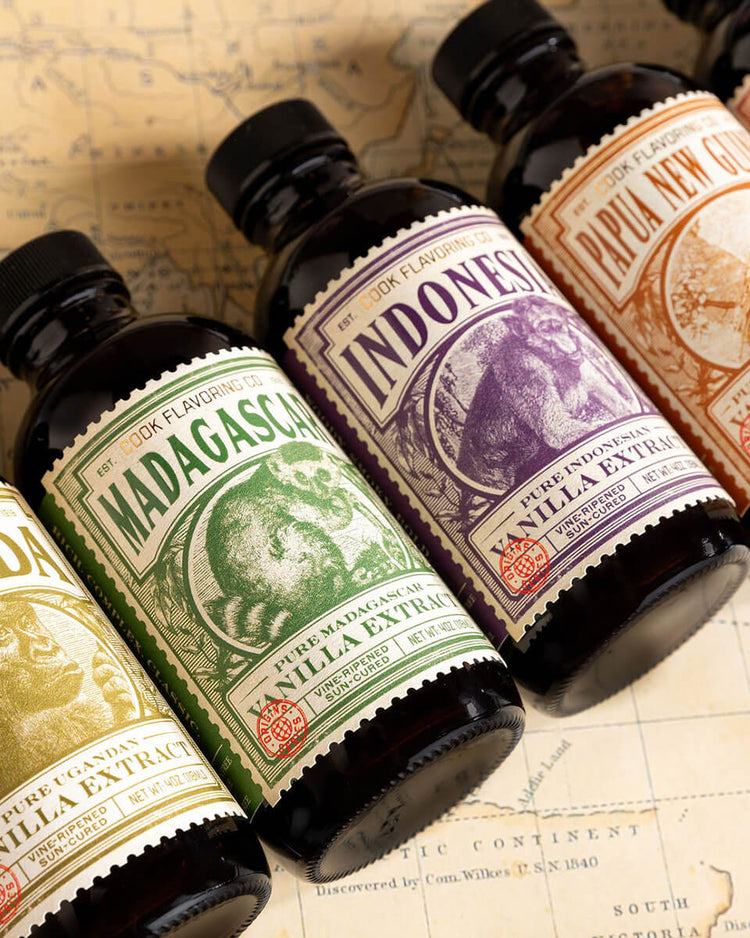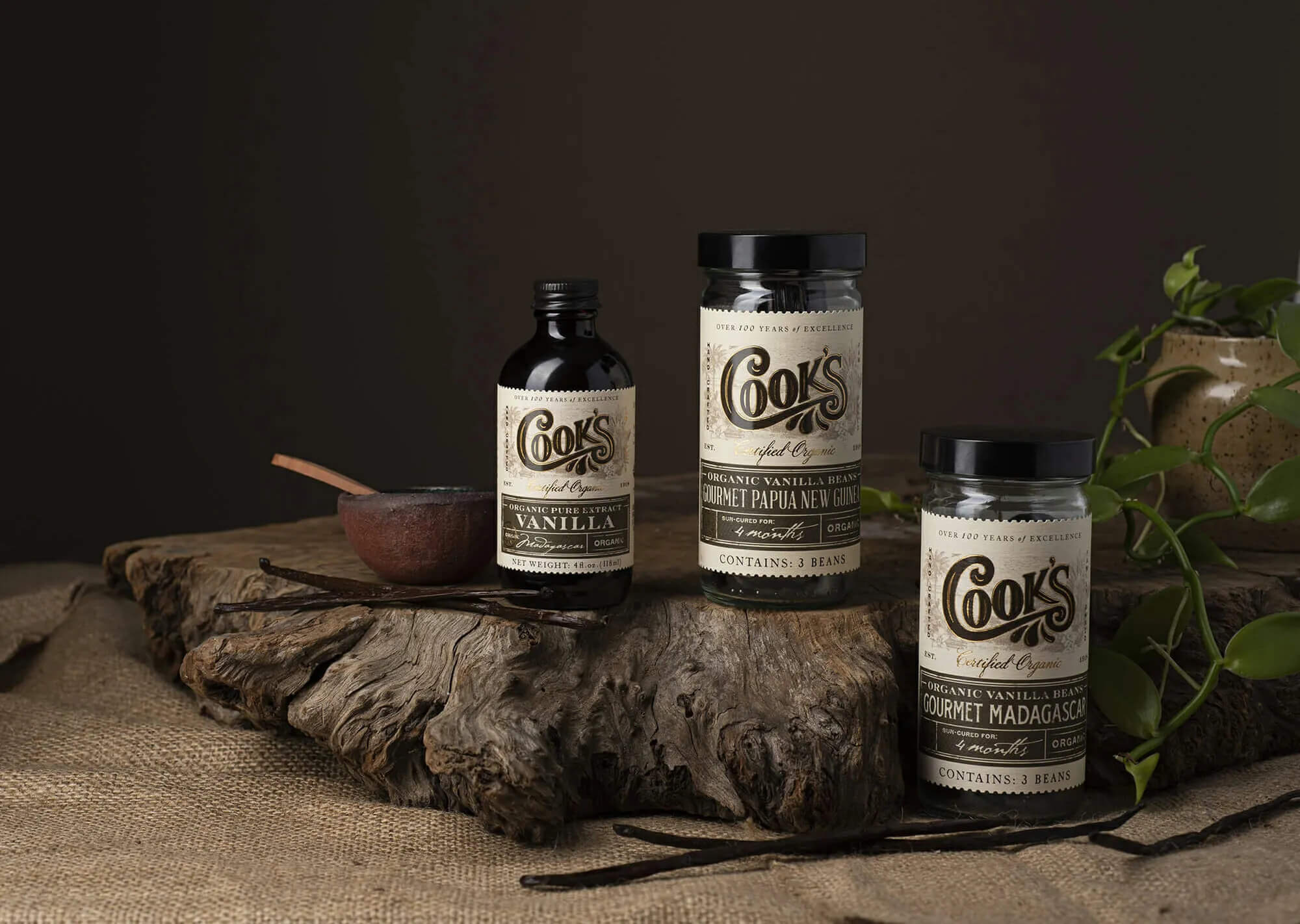Liqueurs and extracts are extremely similar and differ only in their proportions of alcohol and sugar, and their concentration of the flavoring. Liqueurs have become the more prevalent tool for home cooks and small restaurants to pack a punch of flavor into desserts and beverages, while extracts are used almost universally in food manufacturing and industry. The reasons for this come down to those differences in concentration of flavor, sugar, and alcohol. A liqueur typically has a relatively low concentration of alcohol (15%-30%), a high concentration of sugar, and a quite low concentration of flavoring components. This composition lends itself to drinking and also to making small desserts, as it is difficult to make the flavoring too overpowering. Extracts, on the other hand, have a relatively high alcohol percentage (35%-45%), very little sugar (at Cook’s, there is never any added sugar in our products), and a very high concentration of flavoring components. The composition of extracts thus lends itself to manufacturing because of its economic value and for the preservation of ingredient ratios. For instance, if a bakery uses orange extract for a cake, the amount of extract used might be a gallon or two, but if it used a orange liqueur it may have to use ten or twenty gallons to obtain the same flavor payoff of the extract. Not only will the liqueur be much more expensive, but will also throw off the liquid to solids ratio and will affect the texture and baking requirements of the cake.
Once the home cook understands the differences and similarities between liqueurs and extracts, a whole new world of flavoring possibilities opens up. The first, and perhaps easiest option is to make your own liqueurs. This allows you to mix your own drinks and substitute a homemade liqueur for a store bought liqueur in your baking and desserts. You can control the amount of liqueur you make and not waste money on a specialty liqueur that ends up sitting in the cabinet after being used in a single recipe.The other option is to learn to substitute a flavoring or extract for a liqueur in a recipe.
By doing this, a myriad of recipes using your extracts becomes available to you. At Cook’s, we often get asked, “I was intrigued by one of your flavorings while purchasing my vanilla, but I have no idea how to use it. Do you have any recipes that I could try?” The answer to that question is simple! Peruse your favorite cookbook or cooking blog for recipes that involve the sister liqueur for your extract. The substitution can vary depending on the recipe, however, a good place to start is with ¼ Tsp of extract, regardless of the amount of liqueur called for. We recommend tasting the batter and determining if that is enough flavoring before adding more. For some of our extracts (ex. hazelnut, coffee, maple, and vanilla), the flavoring components are delicate and subtle and may require more than that small amount. For some others, especially those whose flavors are achieved with natural oils (ex. almond, citrus flavors, mint, and cinnamon) that small amount will be just enough to add flavor to your dessert without overpowering the senses.
Common liqueurs that can be made easily using our extracts are almond, orange, lemon, anise, hazelnut, peppermint, and cinnamon. To make a liqueur, the ratio is generally as follows: 20% alcohol of your choice, 10-15% sugar, and 70% - 75% water. (To achieve good results, be sure to take into account that alcohol purchased at your local store already contains 60-40% water. For the typical 80 proof liquor, the liqueur formula would be 1 part liquor, 2 parts distilled water, and ¼ part sugar.)








Comments